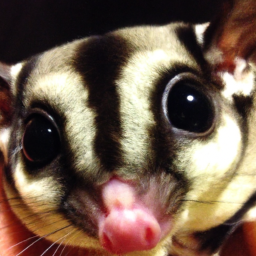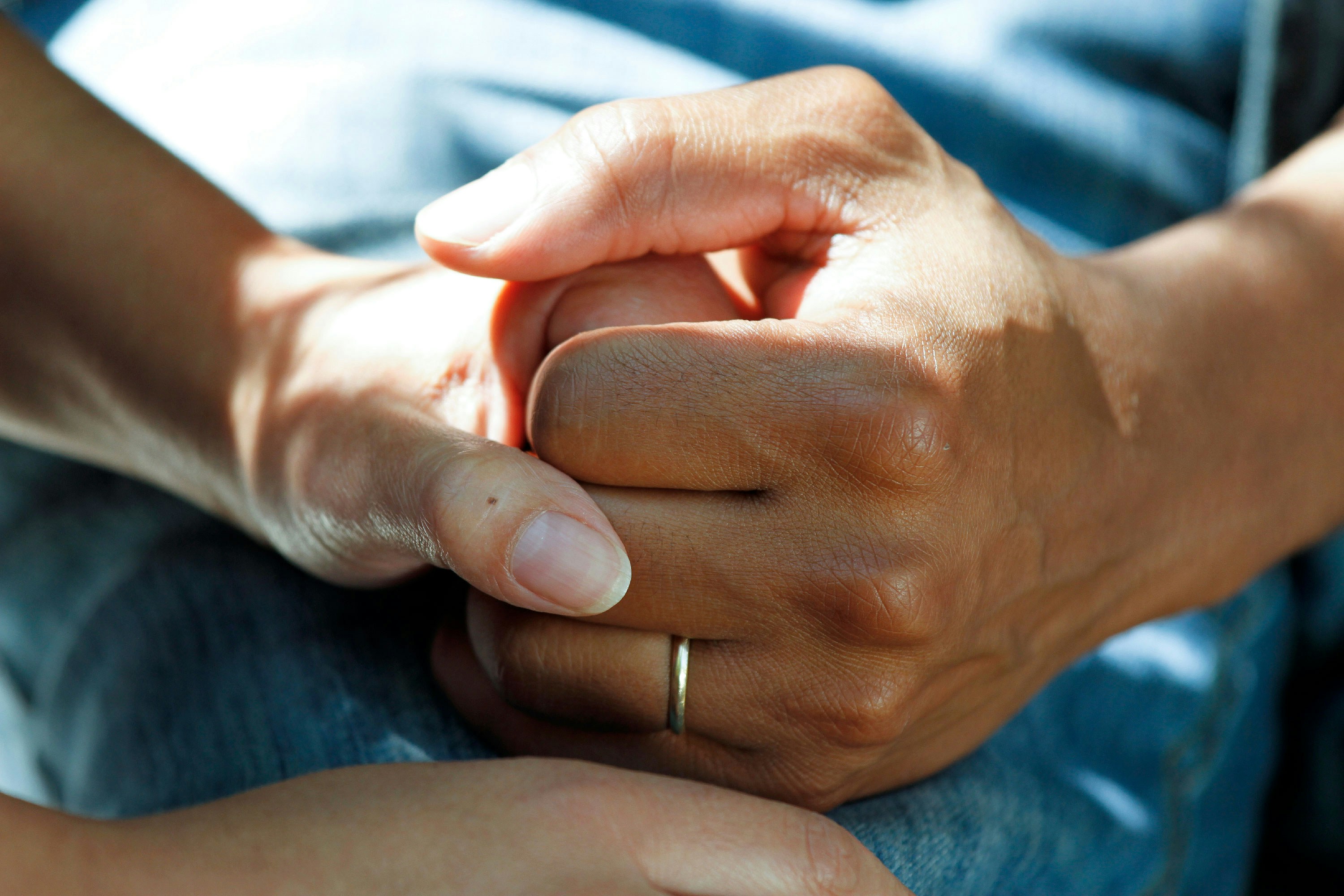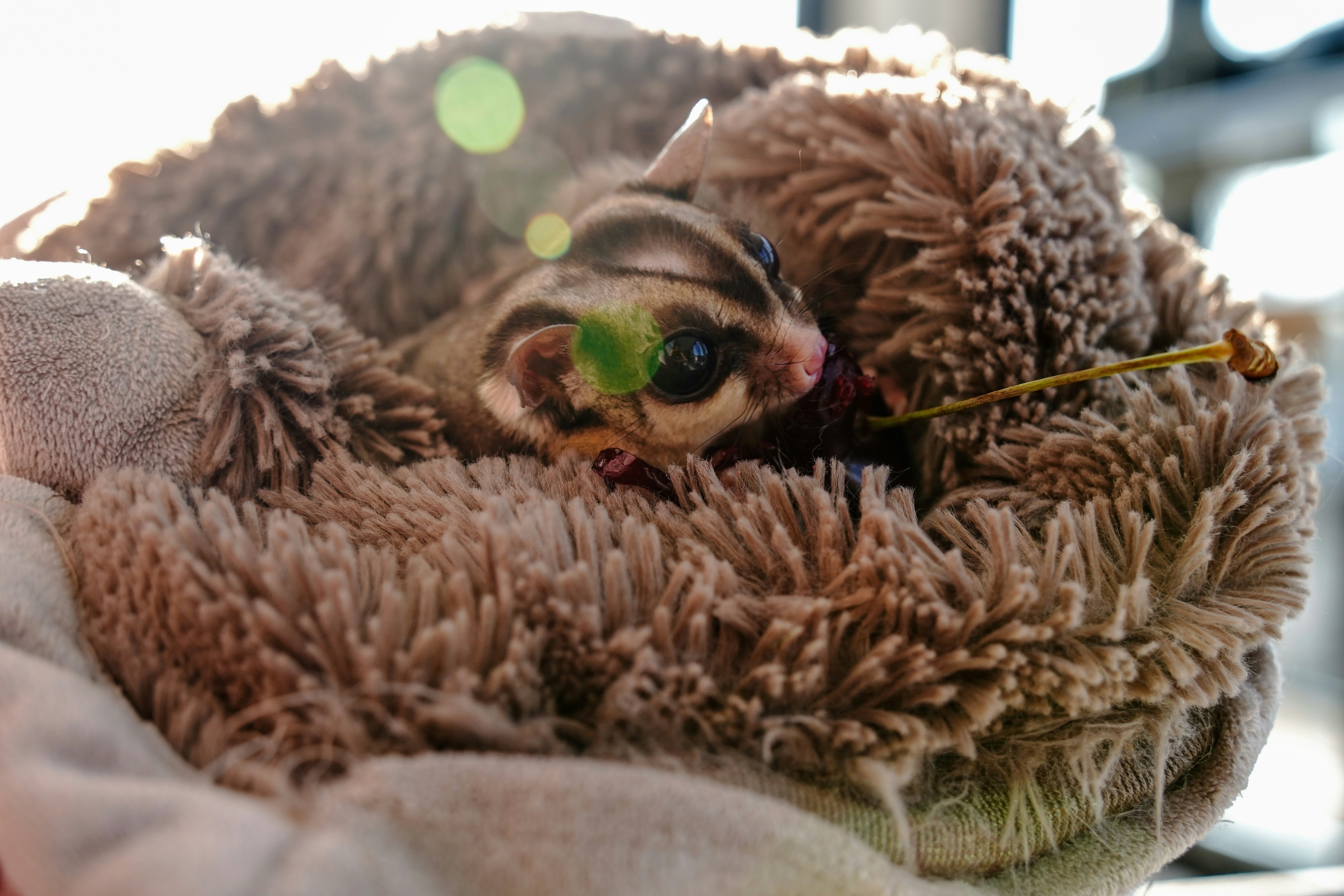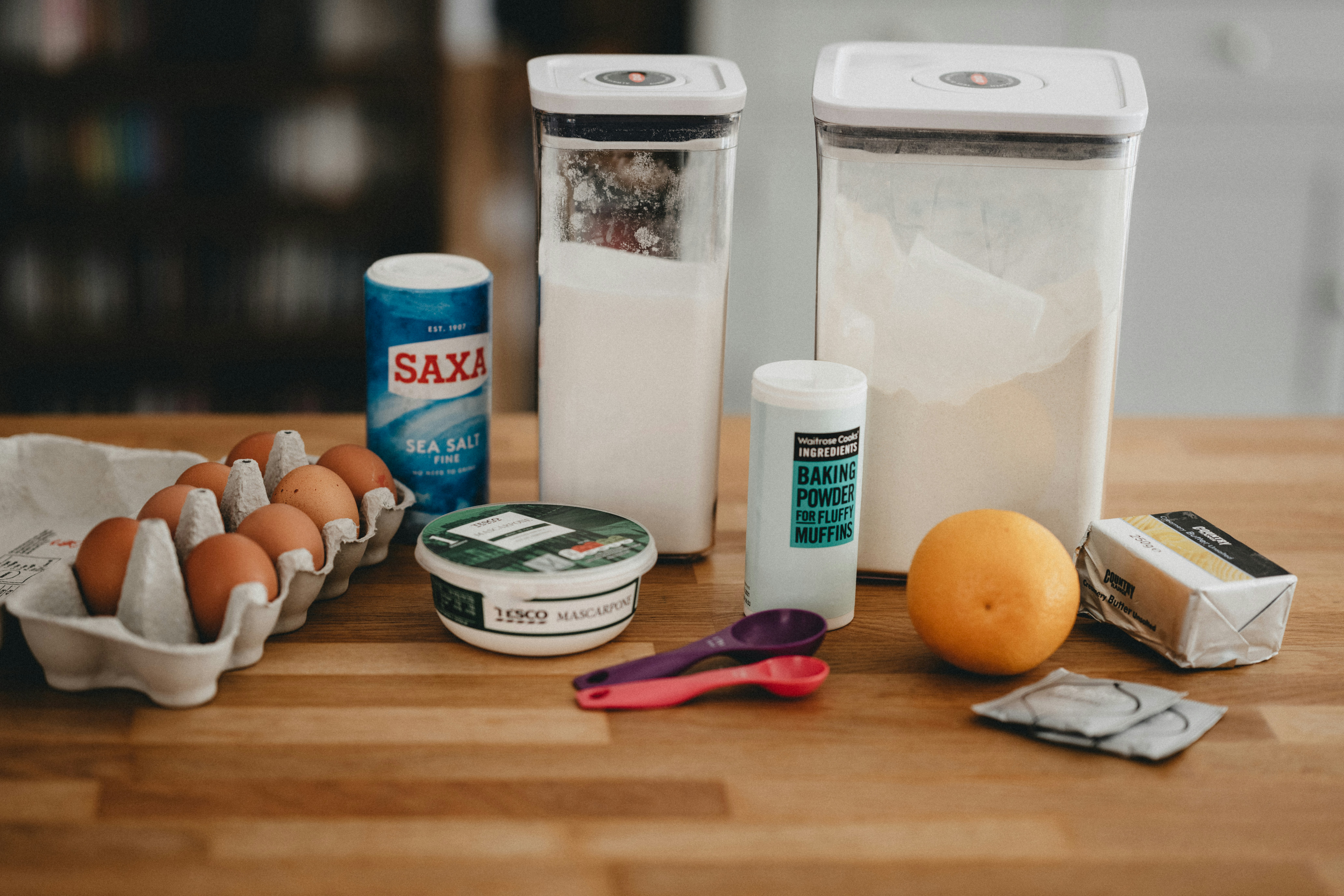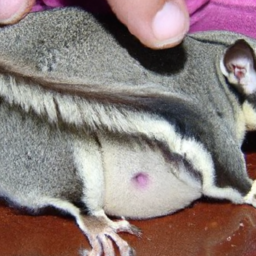How Often Should You Take A Sugar Glider To The Vet
In this article, you will learn about how often you should take your sugar glider to the vet. Owning a sugar glider as a pet requires regular veterinary care to ensure their health and well-being. By understanding the recommended frequency of vet visits, you can provide the best care for your furry little friend.
Regular check-ups are crucial for your sugar glider’s overall health. It is generally recommended to take your sugar glider to the vet at least once a year for a routine examination. During these visits, the vet will assess their weight, teeth, nails, and general health. Additionally, if you notice any changes in your sugar glider’s behavior or appetite, it is important to schedule a vet visit as soon as possible. With regular check-ups, you can help to prevent and detect any potential health issues early on, ensuring a happy and healthy sugar glider.
How Often Should You Take A Sugar Glider To The Vet
As a responsible sugar glider owner, ensuring the health and well-being of your furry friend is of utmost importance. Regular veterinary check-ups play a vital role in maintaining the overall health and happiness of your sugar glider. While it may be tempting to assume that a trip to the vet is unnecessary unless your pet is visibly sick, it is crucial to understand the unique healthcare needs of sugar gliders and the benefits of regular vet visits.
Understanding the Unique Healthcare Needs of Sugar Gliders
Sugar gliders have specific healthcare requirements that differ from those of more traditional pets. These small, nocturnal marsupials are native to Australia and Indonesia, which means they have adapted to different environments and have distinct physiological needs. Understanding their unique healthcare needs is essential to ensure their overall well-being.
Preventing Potential Health Issues
One of the primary reasons for regular vet visits is to prevent potential health issues in sugar gliders. These exotic pets are susceptible to various health problems, including parasitic infestations, respiratory diseases, dental issues, and skin conditions.
By having your sugar glider regularly examined by a qualified exotic animal veterinarian, potential health issues can be identified and addressed early on, increasing the chances of successful treatment and minimizing any discomfort your pet may experience.
Ensuring Proper Nutritional Care
Proper nutrition is crucial for the well-being of any pet, and sugar gliders are no exception. These insectivorous animals have specific dietary requirements that include a combination of fresh fruits, vegetables, insects, and a specially formulated diet specifically designed for sugar gliders.
During regular vet visits, professionals can assess your sugar glider’s current diet and provide recommendations to ensure they are receiving proper nutrition. They can also address any concerns regarding dietary supplements or changes to their feeding routine.
Monitoring Dental Health in Sugar Gliders
Dental health is often overlooked but is a vital aspect of a sugar glider’s overall well-being. Sugar gliders have unique dental structures, including sharp incisors and molars that continuously grow throughout their lives. Regular vet visits allow for thorough dental examinations, ensuring there are no dental abnormalities, such as overgrown teeth or dental infections, which could cause discomfort and affect their ability to eat.
Frequency of Vet Visits
Establishing a Routine Examination Schedule
Establishing a routine examination schedule is essential for the overall health and well-being of your sugar glider. Young sugar gliders, under one year of age, should have more frequent vet visits to monitor growth, development, and to ensure they acclimate well to their new environment.
For adult sugar gliders, it is generally recommended to visit the vet at least once annually. However, it is essential to note that individual circumstances may vary, and certain health conditions may require more frequent visits. Consulting with your vet and following their recommendations is crucial.
Factors to Consider for Vet Visit Frequency
Besides age, there are several factors to consider when determining the frequency of vet visits for your sugar glider. These factors include the overall health of your pet, any pre-existing medical conditions, the presence of any symptoms or behavioral changes, and their living conditions.
If your sugar glider displays any signs of illness or discomfort, such as lethargy, loss of appetite, weight loss, changes in urinary or fecal habits, or any abnormalities in their physical appearance, it is important to seek immediate veterinary attention. Regular observation and prompt action are key in recognizing and addressing potential health issues.
Recommended Minimum Vet Visits per Year
While it is generally recommended to visit the vet at least once annually, some experts suggest two to four visits per year to ensure optimal health management for sugar gliders. Regular check-ups allow for early detection of health issues, preventive measures, and ongoing guidance on proper care and nutrition.
Ultimately, the frequency of vet visits should be determined in consultation with your trusted exotic animal veterinarian, taking into account the unique needs and circumstances of your sugar glider.
Signs that Indicate the Need for a Vet Visit
Recognizing Signs of Illness or Injury
Even with regular check-ups, it is essential to be vigilant and aware of any signs of illness or injury in your sugar glider. As a responsible owner, you should be familiar with their normal appearance, behavior, and habits, enabling you to recognize any changes that may indicate the need for a vet visit.
Signs of illness or injury may include restlessness, changes in appetite or water intake, abnormal behavior or posture, excessive grooming or scratching, discharge from the eyes, nose, or genital area, difficulty breathing, visible wounds or injury, or any other abnormal symptoms.
Understanding Behavioral Changes and Symptoms
In addition to physical signs, behavioral changes and symptoms should also be taken into consideration when determining if a vet visit is necessary. Sugar gliders are highly social animals that form strong bonds with their owners. Any sudden changes in their behavior, such as increased aggression, unusual vocalizations, changes in play patterns, or excessive sleepiness, may indicate an underlying health problem.
It is important to note that sugar gliders are adept at hiding signs of illness or weakness due to their instinctual survival mechanisms. Thus, paying close attention to subtle changes in behavior can aid in early detection and prompt veterinary intervention.
Seeking Immediate Veterinary Attention
In some cases, immediate veterinary attention may be required for your sugar glider. If your pet experiences severe trauma, excessive bleeding, difficulty breathing, seizures, loss of consciousness, or any life-threatening emergency, it is crucial to contact your vet or emergency veterinary services immediately.
Prompt intervention and medical attention can make a significant difference in the outcome and prognosis for your sugar glider.
Preparing for a Vet Visit with a Sugar Glider
Choosing a Vet Experienced in Exotic Animal Care
Not all veterinarians are experienced in treating exotic animals such as sugar gliders. It is crucial to find a veterinarian who has knowledge and experience specifically in treating these small marsupials. This ensures that your sugar glider receives the best possible care during their vet visits.
Seek recommendations from other sugar glider owners or exotic pet communities, and inquire about a vet’s credentials and experience with sugar gliders before making a decision. Building a trusting and collaborative relationship with your veterinarian is key to the well-being of your sugar glider.
Gathering Relevant Medical History Information
Before visiting the vet, it is helpful to gather relevant medical history information about your sugar glider. Record any previous medical treatments, vaccinations, surgeries, or medications your pet has received. This information allows the vet to have a comprehensive understanding of your sugar glider’s medical background and aids in providing appropriate and personalized care.
Transportation Tips for Safe Vet Travel
Transporting sugar gliders to the vet can be a challenging task but is necessary for their well-being. To ensure their safety and comfort during travel, it is crucial to follow a few simple guidelines.
Use a secure and well-ventilated carrier specifically designed for small animals. Line the carrier with a soft bedding material, such as fleece or a t-shirt, to provide comfort. Ensure the carrier is sturdy and escape-proof, as sugar gliders can be quite agile and may attempt to escape. It is also recommended to cover the carrier with a light cloth or towel to reduce stress levels during travel.
Avoid leaving your sugar glider in a parked car, as temperatures can quickly become unsafe. Taking precautions and planning ahead will help ensure a safe and stress-free journey to the vet.
Creating a Comfortable Environment at the Vet Clinic
Sugar gliders are sensitive to their surroundings and can easily become stressed or anxious in unfamiliar environments. Creating a comfortable environment during the vet visit can help alleviate anxiety and make the experience more pleasant for your sugar glider.
Inform the vet clinic in advance about your sugar glider’s arrival and specific needs. Ask if they can provide a quiet and separate waiting area away from noisy or barking dogs, as these sounds can distress sugar gliders. Bringing along familiar items, such as a favorite toy or a small piece of nesting material, can also help provide a sense of security during the visit.
Discussion with the Vet during a Check-Up
Addressing Concerns and Asking Questions
During a check-up, it is important to address any concerns or questions you may have about your sugar glider’s health and well-being. The vet is there to provide guidance and support, and your active participation in the discussion helps ensure that any issues are thoroughly addressed.
Feel free to ask about any changes in behavior, diet, or habitat you may be considering. Discuss any concerns you have noticed, even if they may seem minor. By openly communicating with your vet, you can gain a better understanding of your sugar glider’s needs and make any necessary adjustments to ensure their optimal health.
Receiving Dietary and Nutritional Recommendations
A significant aspect of the vet visit involves receiving dietary and nutritional recommendations for your sugar glider. The vet will assess your pet’s current diet and provide guidance on any necessary adjustments to ensure a balanced and nutritious meal plan.
They may recommend specific fruits, vegetables, insects, or commercially prepared sugar glider diets suitable for their optimal health. This guidance is crucial in preventing nutritional deficiencies and maintaining your sugar glider’s overall well-being.
Exploring Preventive Measures and Vaccinations
Preventive care is always preferable to reactive treatments. During the vet visit, discuss preventive measures such as vaccinations, parasite prevention, and general hygiene practices for sugar gliders. Vaccinations can provide additional protection against common diseases, while parasite prevention helps ensure your sugar glider is free from potentially harmful infestations.
Proactive measures, such as regular check-ups and preventive treatments, can significantly reduce the risk of health issues and increase the chances of a long and healthy life for your sugar glider.
Learning about Common Health Issues in Sugar Gliders
The vet visit serves as a valuable opportunity to learn about common health issues in sugar gliders. By understanding potential problems and their associated symptoms, you can actively participate in the well-being of your sugar glider and take appropriate action when necessary.
Discuss common health issues such as parasite infestations, respiratory problems, dental hygiene, skin conditions, and metabolic disorders. Learn how to recognize the symptoms of these conditions and understand the appropriate steps to take should they occur.
Common Health Issues in Sugar Gliders
Parasite Infestations and Treatments
Parasite infestations can affect sugar gliders, just as they can with any other pet. External parasites, such as fleas or mites, can cause discomfort and itching to your sugar glider. Internal parasites, such as worms or protozoa, can lead to digestive disturbances and overall poor health.
During regular vet visits, the vet will conduct thorough examinations to check for signs of parasites. If detected, appropriate treatment options will be recommended to eliminate the infestation and ensure your sugar glider’s well-being.
Respiratory Problems and Respiratory Disease
Respiratory problems, including upper respiratory infections, pneumonia, or lung inflammation, are common health issues in sugar gliders. These respiratory diseases can be caused by various factors, including bacterial or viral infections, environmental irritants, or changes in temperature or humidity levels.
Regular check-ups allow the vet to monitor your sugar glider’s respiratory health and detect any abnormalities. Timely intervention and appropriate treatment can help alleviate respiratory distress and prevent more severe complications.
Dental Issues and Oral Hygiene
Dental health is vital for sugar gliders, as they have unique dental structures and continuously growing teeth. Dental issues, such as overgrown or misaligned teeth, dental infections, and gum diseases, can cause considerable pain and discomfort.
During regular vet visits, your sugar glider’s teeth will be examined to check for abnormalities or signs of dental disease. The vet can provide guidance on appropriate dental hygiene practices, such as providing dental-friendly toys or recommending dental procedures, if necessary.
Skin Conditions and Care
Sugar gliders are known for their beautiful fur and vibrant colors. However, like any other pets, they can develop various skin conditions that may affect their appearance or comfort.
Regular vet visits enable the vet to thoroughly examine your sugar glider’s skin and fur for any signs of dermatological issues. Common skin conditions include fungal or bacterial infections, allergies, dry skin, or parasitic infestations. Proper diagnosis and treatment can help alleviate discomfort and restore your sugar glider’s skin health.
Metabolic Disorders and Obesity
Metabolic disorders, including obesity, are increasingly becoming a concern for sugar gliders kept in captivity. Incorrect diet and lack of exercise can lead to weight gain and metabolic imbalances, which can have severe consequences on their overall health.
During regular vet visits, the vet will assess your sugar glider’s weight and body condition, providing guidance on appropriate diet and exercise routines. Maintaining a healthy body weight is crucial in preventing metabolic disorders and ensuring your sugar glider’s longevity and quality of life.
Ongoing Wellness Care at Home
Establishing a Healthy Diet and Feeding Routine
One of the most crucial aspects of ongoing wellness care for your sugar glider is establishing a healthy diet and feeding routine. A balanced diet consisting of fruits, vegetables, insects, and commercially prepared sugar glider diets is essential for their overall well-being.
Consult with your vet to determine the appropriate serving sizes and frequency for different food groups. Avoid feeding excessive amounts of sugary or fatty foods, as these can contribute to obesity and other health issues. Regularly inspect the food for freshness and provide a variety of options to ensure a diverse nutrient intake.
Providing a Safe and Stimulating Habitat
Creating a safe and stimulating habitat for your sugar glider is essential to their overall welfare. Provide a spacious enclosure that includes climbing structures, toys, and nesting materials. Regularly inspect the habitat for any potential hazards, such as sharp objects or loose wires.
Enrichment activities, such as hiding treats or introducing puzzle toys, can help stimulate your sugar glider’s natural instincts and provide mental and physical stimulation. Regularly rotate toys and add new elements to keep their environment fresh and engaging.
Monitoring Weight, Body Condition, and Hygiene
Monitoring your sugar glider’s weight, body condition, and hygiene is an integral part of ongoing wellness care. Regularly weigh your pet and compare the results to ideal weight ranges provided by your vet. This helps identify any significant changes that may indicate underlying health concerns.
Observe your sugar glider’s body condition by evaluating their body shape and energy levels. Obesity or sudden weight loss should be addressed promptly with the guidance of your vet.
Maintaining good hygiene is also important. Sugar gliders are known for their fastidious grooming habits, but occasionally, they may require assistance in cleaning hard-to-reach areas. Consult your vet for guidance on proper hygiene practices, including nail trimming, grooming, and bathing routines.
Regular Exercise and Enrichment Activities
Sugar gliders are active animals that require daily exercise to maintain their physical health and mental well-being. Provide opportunities for regular exercise by allowing supervised out-of-cage time in a designated safe area.
Engage your sugar glider in interactive playtime, using toys that encourage climbing, jumping, and gliding. Regular exercise helps prevent obesity, promotes muscle strength, and enhances social bonding between you and your sugar glider.
Resources for Further Information
Reputable Websites for Sugar Glider Health
There are several reputable websites and online resources that provide valuable information on sugar glider health and care. Some trusted sources include:
- The International Sugar Glider Association (www.isga.org)
- The American Association of Sugar Gliders (www.aasg.org)
- The Animal Diversity Web – University of Michigan (animaldiversity.org)
These websites offer a wealth of knowledge, including articles, care guides, forums, and frequently asked questions to support and educate sugar glider owners.
Books and Publications on Sugar Glider Care
For further in-depth information on sugar glider care, there are various books and publications available. Some recommended titles include:
- “Sugar Gliders: The Ultimate Beginner’s Guide” by Kathleen H. Cross
- “Sugar Gliders or Sugar Bears: Facts and Information. The Complete Owner’s Guide” by Kate H. Pellham
- “The Sugar Glider Handbook” by James Douglas and Sammy Van Der Moere
These resources provide comprehensive information on topics such as housing, nutrition, health care, and behavior, assisting sugar glider owners in providing the best care possible.
Online Forums and Communities for Sugar Glider Owners
Engaging with experienced sugar glider owners through online forums and communities can be a valuable way to connect, share experiences, and gain insights into sugar glider care.
Some active online communities include the Sugar Glider Community Forum (www.sugarglider.com), the Sugar Glider Forum and Rescue (www.sugargliderrescue.org), and various groups on social media platforms such as Facebook. These platforms provide a supportive environment where you can ask questions, seek advice, and share your love for sugar gliders with fellow enthusiasts.
Is It Important to Take My Sugar Glider to the Vet if I Need to Put a Leash on It?
Yes, it is essential to take your sugar glider to the vet before leashing a sugar glider. A vet can ensure your pet is healthy enough for the harness and provide guidance on how to properly acclimate them to wearing it. It’s crucial for their well-being and safety.
Can Regular Vet Check-ups Help Prevent Sugar Glider Eye Infections?
Regular vet check-ups are essential for treating sugar glider eye infections. A vet can detect early signs of infection, provide proper treatment, and offer preventive measures to keep your sugar glider’s eyes healthy. Don’t overlook the importance of regular visits to the vet for your pet’s eye health.
Conclusion
Maintaining the health and happiness of your sugar glider is a responsibility that should not be taken lightly. Regular vet visits are an essential part of proactive pet ownership, allowing for early detection and prevention of potential health issues. By establishing a routine examination schedule, seeking prompt veterinary attention when needed, and creating a comfortable environment for your sugar glider at the vet clinic, you can ensure their optimal well-being.
Remember to choose a vet experienced in exotic animal care, gather relevant medical history information, and carefully transport your sugar glider to the vet for a stress-free experience. During check-ups, actively participate in discussions with the vet, addressing concerns, receiving dietary recommendations, exploring preventive measures, and learning about common health issues in sugar gliders.
Ongoing wellness care at home involves establishing a healthy diet and feeding routine, providing a safe and stimulating habitat, monitoring weight and body condition, and engaging in regular exercise and enrichment activities. By following these guidelines and seeking reliable resources for further information, you can build a trusted relationship with a qualified exotic animal veterinarian and ensure the long and healthy life of your beloved sugar glider.
